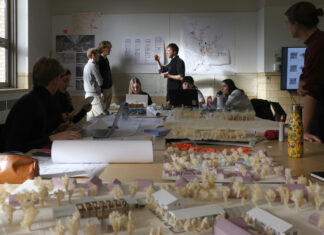The world looks spellbound and a little surprised at Ukraine. There, the armed forces managed an extremely successful counter-offensive against the Russian occupiers. Since August 29, the Ukrainians have recaptured more than 9,000 square kilometers of land. How was that possible?
Ukraine tends to keep a low profile when it comes to its war strategy. However, a report by the New York Times now reveals that Ukraine intensively planned the offensive several months in advance, including with the help of secret service agents and officials from the United States and Great Britain.
It had started with a clear demand from Zelenskyj. The Ukrainian president told his generals in early summer that he wanted to show the world “with a dramatic step” that his country could push back the Russian invasion. The aim was to boost the morale of his troops, but also to send a signal to the West. Namely: Ukraine can win, but needs Western weapons.
Under his orders, the Ukrainian military drew up a plan for a full-scale attack in the south to recapture Kherson and cut off Mariupol from Russian forces to the east.
But the Ukrainian generals hesitated. They doubted whether the plan could really work. The losses at that time also weighed heavily. Hundreds of soldiers died every day, the grueling war seemed deadlocked.
Therefore, after much hesitation, the Ukrainian commanders decided to “open up” and “ask for advice” to American and British intelligence officials, according to the Times, citing senior US officials.
High-ranking officials were also involved, such as US National Security Advisor Jake Sullivan and Zelenskyi adviser Andriy Yermak. At the military level, Chief of Staff Mark A. Milley and senior commanders of the Ukrainian army exchanged views. In Kyiv, in addition to consultations with the British, there were also daily consultations between Ukrainian generals and the US defense attaché, Brigadier General Garrick Harmon.
Time was of the essence, everyone agreed: the counterstrike had to be launched before winter and thus before Putin had the opportunity to put pressure on Europe by stopping gas.
The Times writes of a “critical moment” when a simulation game by Ukrainian and American officials predicted Ukraine’s defeat in the summer. At that time, a counter-offensive was only tested in the south.
“We did some modeling and exercises,” Pentagon chief Colin Kahl is quoted as saying. “The drills suggested that certain avenues for a counteroffensive were likely to be more successful than others. We gave advice and the Ukrainians then internalized it and made their own decision.”
The US then provided intelligence information to Ukraine throughout August. They named the positions of Russian forces and pointed out weak points.
Pentagon head Kahl: “We have also seen that the Russians have moved a large part of their best forces to the south.” That is where the counter-offensive was suspected. Accordingly, it was assumed that there were some parts of the Russian military that were not as stable “as on paper”.
The Ukrainian military therefore decided to launch the major offensive on two fronts. One near Cherson on the Black Sea that would likely take days or weeks given the Russian troop strength there. And a second in the eastern Kharkiv region.
The project was again played out by Ukraine, Great Britain and the USA. This time, the officials of the three countries agreed: the plan would work and with it Zelenskyj’s desire for “a big, clear victory”.
In fact, the plan worked. Overall, Ukrainian forces liberated hundreds of villages near Kharkiv and Cherson. According to ISW data, since August 29, Kyiv has recaptured around 9,000 square kilometers. This increases the size of the reconquered areas to 60,000 square kilometers.
Ukraine’s success was highly dependent on US intelligence and high-tech weaponry, according to the Times. However, US officials told the newspaper that the success was “fully attributable to Mr Zelenskyy and the Ukrainian military”.
Meanwhile, Moscow is tight-lipped and tries to portray the hasty withdrawal of Russian troops from Kharkiv as a strategic “regrouping”. But there are rumblings in circles close to the Kremlin and criticism of Putin is growing. It remains to be seen how the leadership in Moscow will react – with negotiations or escalation.
On the topic: “First cracks in the edifice of lies” – That’s how dangerous the war bankruptcies are for Putin
















































